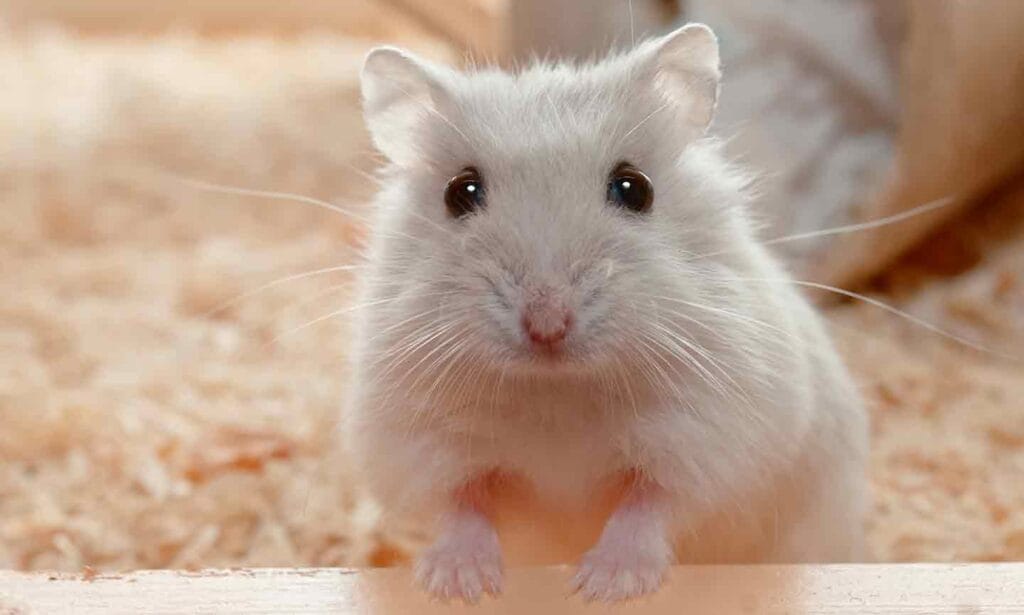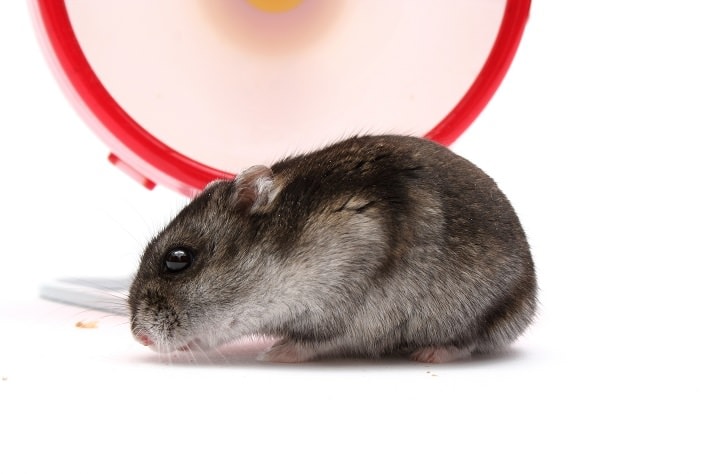How Long Do Hamsters Live?
Generally, hamsters can live up to 2–3 years, which is a fairly typical age range for small rodents, says Susan Tyson, VMD, MS, veterinarian and owner at Avian & Exotic Philly Vet Medical Surgical Clinic, in Philadelphia, Pennsylvania. Small animals typically have shorter lifespans than larger animals, she adds—a horse, by comparison, can live 20–30 years.
In the wild, hamsters live in burrows, or brush-filled environments like tunnels and other cooler areas, which can help protect them from natural predators. “Living in a safe environment with an adequate diet and care, a domestic hamster is likely to live longer than one in the wild,” Dr. Tyson says.
“There are several factors that can influence the longevity of captive hamsters, including nutrition, husbandry, and genetics,” says Walter Merker, DVM, exotic animal veterinarian at Orange Grove Animal Hospital, in Tucson, Arizona.
Additionally, these naturally curious animals can experience serious injuries from relatively minor accidents due to their small size. They’re also prone to bacterial and fungal pathogens, as well as heart disease and cancer later in life, he adds.
5 Pet Hamster Species
There are 24 recognized species of hamsters. Dr. Tyson shares the five pet hamster species in the United States and their average life expectancy:
- Syrian hamster, aka “Teddy Bear hamster”: 2–4 years
- Russian Dwarf hamster, aka “Winter White Dwarf hamster”: 2 years
- Dwarf Roborovski hamster: 3 years
- Campbell’s Dwarf Russian hamster: 2 years
- Chinese hamster: 3 years
How To Give Your Hamster the Best and Longest Life
While we have no control over genetics, we can help give a pet hamster their best, longest life by focusing on their diet, weight, and activity. Drs. Tyson and Merker share the following tips on how to keep your hammy happy and healthy:
Feed a Nutritious Diet
Hamsters are omnivores. A healthy diet for a pet hamster consists of a bowl of fresh vegetables twice a day and a tablespoon of high-quality hamster food daily.
Treats, such as a pinch of cooked meat, sugary vegetables, or fruit, should be given sparingly, one to three times each week, Dr. Tyson says.
Because seeds and nuts are considered unhealthy options that may lead to selective eating, it’s important to feed a pelleted food that doesn’t contain them.
Hamsters should also have access to clean, fresh water in a sipper bottle at all times.
Provide a Spacious, Well-Ventilated Habitat
A large, wire hamster cage with a solid metal or plastic bottom is ideal, as it provides more ventilation than a glass enclosure and can help prevent respiratory infections, Dr. Tyson says.
Keep the cage temperature around 65–70 degrees Fahrenheit with humidity levels at 30–50%.
She recommends placing their cage in a location where there’s social activity in the home, but it is fairly quiet and dimly lit during the day.
And don’t forget to provide them with a hideout space for security and comfort.
Use Hamster-Friendly Bedding
Hamsters benefit greatly from a deep layer of bedding, like recycled paper or other low-dust options, Dr. Merker notes.
When choosing bedding for your hammy, make sure to never use aromatic wood shavings, such as pine or cedar, since they can irritate their respiratory system.
Dr. Tyson says to be careful of using paper bedding that has lots of dust and hides their feces or urine. This can be an issue, as it makes it more difficult to catch early signs of gastrointestinal stasis, urinary tract disorders, or reproductive disease.
Prevent Boredom With Enrichment and Exercise
As naturally inquisitive and energetic animals, hamsters need more playtime and exercise than their small size might lead one to think. Dr. Tyson recommends providing your hamster with at least two hours of exercise per day and giving them toys for emotional and intellectual enrichment, particularly chew toys because hamster teeth never stop growing.
For mental stimulation, consider making mazes or placing natural materials, like pine cones, in their habitat for them to forage in. “They enjoy tearing up paper or cardboard for nesting material, and they will burrow if given the opportunity,” she says.
They also need an exercise wheel, which should be large enough for them to safely run on and have a solid running surface to avoid foot injuries.
Schedule Regular Veterinary Appointments
A general guideline for regular checkups for hamsters depends on your hamster’s age, according to Dr. Tyson. If they’re between 3 months and 1 year old, they’ll benefit from a yearly visit with a comprehensive exam.
When hamsters reach 2 years old, they should see a vet twice a year with a comprehensive dental exam, potentially X-rays, and once-yearly blood work.
You should also take your hammy to the vet if you notice any signs of illness.
When it comes to hamster care, Dr. Merker says providing a clean and stimulating environment, as well as proper nutrition and veterinary checkups, all go a long way in promoting the welfare of these animals in captivity.
More About Hamsters
Share:












